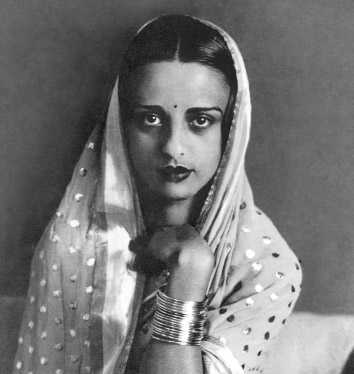
Iconic: Sher-gil
Seventy seven years after her death, The New York Times has published an obituary of Amrita Sher-gil, a pioneer of modern Indian art.
Since 1851, obituaries in The New York Times have been dominated by white men. Acknowledging that, it is now adding the stories of other remarkable people in the series, Overlooked No More. Among them is Amrita, who got an obituary last month.
The obit begins as a tribute to her art, how she “used her paintbrush to depict the daily lives of Indian women in the 1930s, often revealing a sense of their loneliness and even hopelessness.” Tariro Mzezewa, the paper’s staff writer, refers to her melancholic painting Three Girls and points at the stark contrast between their “solemn brown faces” and “vibrant reds, greens and ambers of their clothing”. She says the mood is despondent, as though the women are waiting for something they doubt will ever come along.
She says the artist created self-portraits that showed her “grappling with her own identity”. It touches upon her conflict about her sexuality too. It refers to her “strong bond with the painter Marie Louise Chassany”, and how some art critics — including her nephew, the artist Vivan Sundaram — have believed that her piece Two Women reflected their longing for one another.
Amrita was born in Budapest to a Hungarian mother and Sikh father. She kept travelling between India, Hungary and Paris and the various journeys impacted her works. While she was studying in Paris and earning herself a reputation and awards, she began to be haunted by India and made the return journey towards the end of 1934 and found “the inspiration she needed as she travelled around the country and reconnected with its people”.
Mzezewa writes of Amrita’s last few years when she settled in Saraya in UP and then in Lahore. How she fell ill before her significant solo art show in Lahore. “Sher-gil died on December 5, 1941. The cause was believed to be complications from a second, failed abortion performed by Egan, (Yashodhara) Dalmia wrote in her biography of Sher-gil. She was 28 and was just gaining widespread popularity and taking on commissions.” Amrita’s fame has grown tremendously in the past few years and her works have been selling at record prices. A self-portrait sold at $2.92m at Sotheby’s New York sale in 2015. Mzezewa ends by quoting from a letter Amrita wrote to her mother in 1931. “Everybody says that I have improved immensely; even that person whose criticism in my view is most important to me — myself.” Perhaps that explains her explorations of herself in her works.
(The other Indian to get an obituary in this series is Hindi film actress Madhubala.) — Sarika Sharma



























